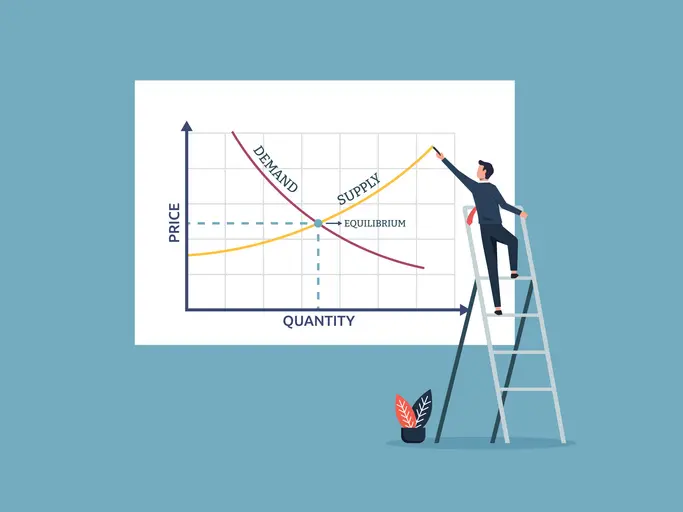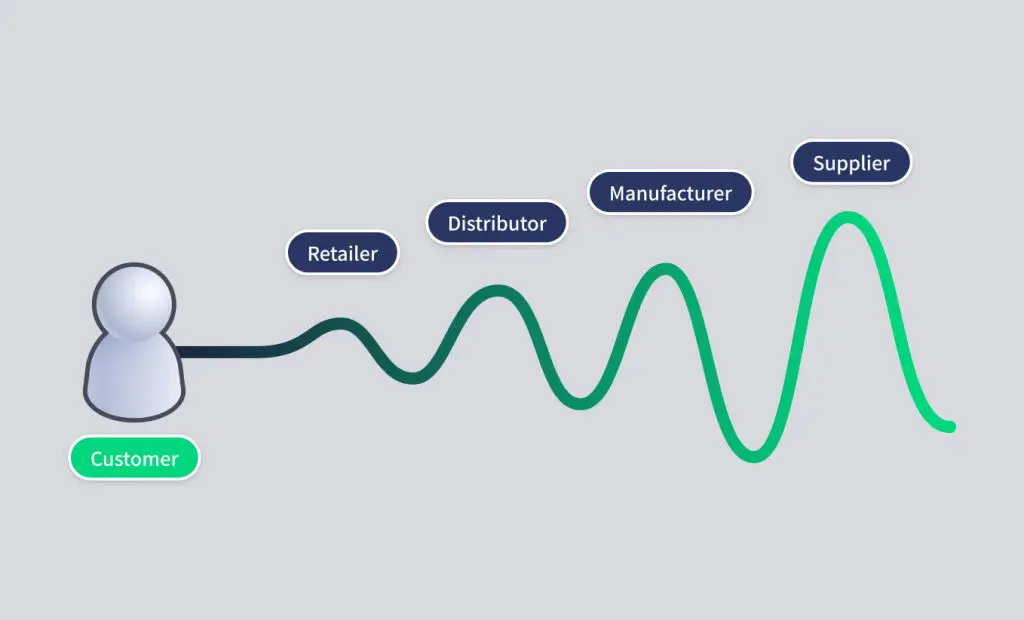In the complex realm of inventory management, the concept of reorder levels is paramount. This detailed guide will thoroughly examine the importance, components, calculation methods, and management strategies of reorder levels. By the conclusion, you will gain a comprehensive understanding of how effectively managing reorder levels can enhance your inventory processes and drive business success.
What is a Reorder Level?
The reorder level, or reorder point, is a vital threshold in inventory management that indicates when to order new stock to prevent shortages. It represents the minimum quantity that must be kept on hand to ensure smooth operations and customer satisfaction. Balancing the need to avoid stock-outs with the goal of minimising excess inventory, the reorder level prompts a replenishment order when stock falls to or below this point. This ensures new stock arrives just as the existing supply runs out. The reorder level is essential for maintaining a consistent flow of goods, preventing demand from exceeding supply. By setting appropriate reorder levels, businesses can meet customer demands efficiently without overinvesting in inventory.
Why is Reorder Level Important?
A well-defined reorder level is crucial for modern business operations, serving as a foundation for effective inventory management with significant benefits for both the bottom line and customer satisfaction. Primarily, an accurate reorder level prevents stock-outs, ensuring businesses consistently meet customer demand. This avoids the negative impacts of lost sales, damaged customer relationships, and a tarnished reputation, ultimately boosting customer satisfaction and loyalty.
Additionally, reorder levels optimise inventory holding costs by maintaining just enough stock to meet demand without tying up excessive capital in excess inventory, resulting in a reduction of storage costs and frees resources for other strategic initiatives. Effective reorder levels also improve cash flow management by facilitating timely and appropriate ordering, preventing large, infrequent purchases that can strain financial resources.
Moreover, they enhance forecasting and planning by providing insights into demand patterns, seasonality, and trends through close monitoring of reorder frequency and quantity. The data retrieved supports better purchasing decisions and production planning.
Reorder levels also strengthen supplier relationships by promoting consistent, predictable orders, making it easier for suppliers to manage their production and logistics, potentially leading to better terms, pricing, and service.
And lastly, automating the reordering process based on predefined levels enhances operational efficiency, reducing the time and effort spent on manual inventory checks and last-minute orders, thus empowering staff to focus on more value-added activities, improving overall productivity.
Components of Reorder Level
Understanding reorder levels includes grasping several key components that work together to determine the optimal point for placing new orders.
First, Lead Time is the period between ordering and receiving goods, influenced by factors such as supplier processing, manufacturing, shipping, customs, and quality control. Accurately estimating lead time is crucial to avoid stock-outs or excess inventory.
Next, Average Daily Usage (ADU), the typical daily consumption or sales of an item, helps gauge inventory depletion rates. ADU should be calculated over different periods and consider trends like seasonality and promotions.
Safety Stock is extra inventory to cushion against demand variability and supply issues, such as unexpected demand spikes, supplier delays, and quality problems. Balancing safety stock is essential to avoid high holding costs while preventing stock-outs.
Maximum Daily Usage considers the highest amount of an item needed in a single day, preparing businesses for peak demands without overstocking during normal periods.
Minimum Order Quantity (MOQ), imposed by some suppliers, affects reorder levels by requiring adjustments to meet minimum purchase requirements while maintaining optimal inventory.
Finally, Economic Order Quantity (EOQ), though not a direct component, is related to reorder levels. EOQ determines the ideal order quantity that minimises total inventory costs, balancing holding and ordering expenses.
A comprehension of these components and their interactions is vital for effective reorder level calculation and management, ensuring optimal inventory control.
Take a cue from the experts and optimise your inventory, the Intuendi way!
How To Calculate Reorder Level
Calculating the reorder level is a critical process that involves careful consideration of several critics components. Here’s a step-by-step guide to help you determine the reorder point effectively:
Step-by-Step Calculation Guide
First, identify the Average Daily Usage (ADU) by analysing sales or consumption data over a significant period, such as the past quarter or year. Calculate the total units sold or used, then divide by the number of days in that period. For example, if you sold 9,000 units over 90 days, the ADU would be 100 units per day.
Next, determine the Lead Time, which is the period it typically takes from placing an order to receiving the goods, including processing, shipping, and other relevant factors. For instance, if it takes two weeks to receive an order, the Lead Time is 14 days.
Then, calculate Lead Time Demand by multiplying the ADU by the lead time. In our example, 100 units per day multiplied by 14 days equals 1,400 units.
Assess Safety Stock Needs based on factors such as demand variability, supply chain reliability, and the cost of stock-outs. This can involve statistical analysis, but a simple method is using a percentage of lead time demand. For example, with a 20% safety stock, the calculation would be 1,400 units multiplied by 20%, resulting in 280 units of safety stock.
Finally, apply the Reorder Level Formula: Reorder Level = Lead Time Demand + Safety Stock. Using our example, the reorder level would be 1,400 + 280, equaling 1,680 units. This means you should place a new order when your inventory level drops to 1,680 units.
After implementing your calculated reorder level, assess and adjust as needed based on actual performance, changes in demand patterns, or shifts in lead times. This ongoing evaluation ensures that your reorder levels remain effective and aligned with your business needs.
Reorder Point Formula
While the basic formula we’ve used is straightforward, more sophisticated approaches can provide greater accuracy, especially in complex or volatile environments. An expanded version of the reorder point formula is:
Reorder Point = (Average Daily Usage × Lead Time) + Safety Stock
Where Safety Stock can be calculated as: Safety Stock = Z × σ × √(Lead Time)
In this formula:
- Z is the desired service level factor (based on the normal distribution)
- σ is the standard deviation of daily demand
- Lead Time is in days
This more advanced formula takes into account demand variability, allowing for a more precise calculation of safety stock. The Z factor corresponds to the desired service level – for instance, a Z score of 1.65 corresponds to a 95% service level, meaning you’d expect to meet demand 95% of the time.
To illustrate, let’s expand our previous example:
Assume:
- Average Daily Usage = 100 units
- Lead Time = 14 days
- Desired Service Level = 95% (Z = 1.65)
- Standard Deviation of Daily Demand (σ) = 20 units
First, calculate the safety stock: Safety Stock = 1.65 × 20 × √14 = 123.5 units (rounded to 124)
Then, apply the full formula: Reorder Point = (100 × 14) + 124 = 1,524 units
This more nuanced approach results in a lower reorder point than our simpler calculation, potentially leading to lower inventory costs while still maintaining a high service level.
Understanding and applying these calculation methods allows businesses to set reorder levels that balance the risk of stock-outs against the cost of holding inventory. However, it’s important to remember that these calculations are based on assumptions about future demand and lead times. Regular review and adjustments are necessary to ensure they remain effective in the face of changing business conditions.
Factors Influencing Reorder Point Calculations
While formulas provide a solid foundation, various factors can influence these calculations, necessitating adjustments to maintain optimal inventory levels in dynamic business environments.
Demand
Demand is a significant factor affecting reorder levels. Seasonal fluctuations require adjustments to account for predictable variations, such as increased sunscreen sales in summer. Long-term trends, marketing activities, competition, and changes in the product life cycle also impact demand and necessitate corresponding adjustments.
Lead Time
Lead Time variability can significantly impact said levels. Changes in supplier capacity, transportation issues, global events, and customs or regulatory changes can extend lead times, requiring higher reorder levels to buffer against these delays.
Supplier Reliability
Supplier Reliability plays a crucial role in determining the aforementioned levels. Factors like order fulfilment rates, quality issues, and a supplier’s financial stability may necessitate higher reorder levels to ensure a sufficient supply of good stock.
Timing
Timing of orders and deliveries also influences reorder level calculations. Businesses with fixed ordering cycles or specific delivery schedules need to adjust reorder quantities to ensure sufficient stock between these predetermined points. For businesses operating outside standard hours, higher reorder levels may be necessary to account for times when orders cannot be placed or received.
Tip for Management
Management Tip: Regular review and adjustment of reorder levels are crucial. Implement real-time inventory tracking systems to alert managers to changes in demand patterns or lead times. Conduct regular reviews of reorder levels, considering recent performance and anticipated changes. Develop strong relationships with suppliers for better communication about potential issues. Utilise forecasting tools and safety stock optimisation software to anticipate changes and adjust reorder quantities proactively.
Staying attentive to these factors and regularly fine-tuning reorder levels capacitates businesses to maintain optimal inventory levels, reduce costs, and ensure high levels of customer service.
Types of Reorder Levels
While the basic concept of a reorder quantity remains constant, different approaches can be implemented based on a business’s specific needs and characteristics. Understanding these methods helps organisations choose the best inventory management strategy.
Fixed Reorder Level
A fixed reorder level triggers an order when inventory drops to a predetermined point, regardless of other factors. This straightforward method involves a constant reorder point and often a fixed order quantity, typically based on the Economic Order Quantity (EOQ). The advantages include simplicity, consistency, and minimal management, making it ideal for products with stable demand and consistent lead times, such as a hardware store that sets a minimum stock level level of 1000 screws and orders 500 more when inventory drops to 1000. However, it lacks flexibility and can lead to over or under-stocking.
Dynamic Reorder Level
On the other hand, a dynamic reorder level adjusts based on changing conditions like demand fluctuations, lead time variations, or seasonal factors. This method uses real-time data and forecasting techniques to vary both the reorder point and the order quantity. Its flexibility and responsiveness are well-suited for products with variable demand, fluctuating lead times, larger businesses, and rapidly changing markets. For instance, an online fashion retailer may increase reorder levels for popular t-shirts during the summer, considering recent sales trends and upcoming promotions. Despite its advantages, it is more complex and has higher setup costs.
Continuous review systems monitor inventory constantly and place orders as soon as levels hit the reorder point, requiring sophisticated tracking systems but offering up-to-date control. In contrast, periodic review systems check inventory at fixed intervals (e.g., weekly, monthly) and order if levels are at or below the reorder point. This method is simpler but may result in higher average inventory levels.
Many businesses use hybrid approaches*combining fixed and dynamic reorder levels. For example, a time-based dynamic reorder level adjusts reorder levels based on predefined periods (e.g., monthly, seasonally), offering predictability and adaptability. ABC analysis categorises items (A: high value, B: moderate value, C: low value) and applies different strategies to each category. The min-max system sets a minimum (reorder point) and maximum level, ordering to the maximum when the minimum is reached, providing flexibility and defined inventory ranges.
Choosing the right system is crucial for effective inventory management. Businesses must consider factors like demand nature, lead time consistency, product characteristics, available technology, supply chain complexity, business size, and industry. By carefully evaluating these factors and understanding the various systems, businesses can implement an approach that optimises inventory management, balancing cost efficiency with customer service levels.
Strategies for Managing Reorder Levels
Effective management of reorder quantities involves more than just setting initial values. It requires continuous monitoring, analysis, and adjustments to maintain optimal inventory levels as business conditions evolve. Here are some key strategies for managing reorder levels effectively:
Setting Optimal Reorder Levels
Effective management of reorder quantities involves a data-driven approach, considering total costs, segmentation, collaborative planning, and regular review. First, utilise historical sales data, lead time information, and demand forecasts to set and continually refine reorder levels with robust data collection and analysis systems. Next, consider the total cost by factoring in holding costs, stockout costs, ordering costs, quantity discounts, and potential lost sales. Segment inventory items based on value, criticality, and demand variability, applying different reorder strategies to each category for more efficient management. Collaborative planning is essential; involve multiple departments like sales, marketing, and production to ensure a comprehensive understanding of factors affecting inventory needs. Finally, establish a schedule for regularly reviewing and adjusting reorder levels, with the frequency based on the product and market dynamics.
Adjusting Reorder Levels for Seasonal Demand
Effective management of reorder levels involves several advanced strategies. Utilise advanced forecasting techniques that account for seasonality and trends, incorporating both historical data and forward-looking indicators. Adjust safety stock dynamically to anticipate seasonal demand changes, increasing it before peak seasons and reducing it during off-peak periods. Collaborate with suppliers to manage lead times during peak seasons, and consider alternative suppliers or expedited shipping for critical periods. Implement temporary adjustment factors, such as multipliers or additives, to reorder levels during seasonal peaks, gradually modifying them as the season progresses. Employ rolling horizon planning, which looks several seasons ahead and regularly updates plans with new information.
Using Technology for Reorder Level Management
Effective reorder level management involves utilising various technological tools and strategies to maintain optimal inventory levels. Implementing specialised inventory management software allows real-time tracking and automatic reorder triggers based on predefined rules. Advanced predictive analytics tools can forecast future demand more accurately by considering multiple variables, including external factors like economic indicators and weather patterns. Integrating Internet of Things (IoT) devices provides instant updates on stock levels and predicts maintenance needs for stock-holding equipment. Machine learning algorithms can continuously refine reorder levels based on actual performance, identifying patterns that might be missed otherwise. Connecting your inventory management system with supplier systems offers real-time updates on lead times and potential supply issues. Mobile applications enable managers to monitor and adjust reorder levels from anywhere, enhancing flexibility. Visual dashboards provide at-a-glance information on inventory levels and reorder points, quickly identifying items nearing reorder. By implementing these strategies, businesses can create a dynamic and responsive system for managing reorder levels, contributing to overall efficiency and customer satisfaction. Continuous monitoring, analysis, and adjustment are crucial for successful inventory reorder point management in response to changing business conditions.
Conclusion
Effective management of restock levels is vital for successful inventory management, balancing product availability with minimising excess inventory costs. This comprehensive guide has delved into the multifaceted nature of stock replenishment points, covering their basic definition, complex calculation methods, and management strategies.
Key insights include understanding the components that influence reorder levels, such as lead time, average daily usage, and safety stock, and the need for accurate calculation methods that account for demand variability. Recognising and adapting to factors like demand fluctuations, lead time variations, and supplier reliability is crucial. Different reorder level systems exist, each suited to specific business needs and environments, and technology plays a significant role in modern reorder level management, from basic inventory software to advanced predictive analytics and IoT solutions.
Regular review and adjustment of reorder levels are necessary to maintain effectiveness in dynamic business environments. Efficient inventory management helps avoid stock-outs and excess inventory, improving cash flow, customer service, and profitability. There is no one-size-fits-all approach; each business must consider its unique characteristics, such as industry, size, supply chain complexity, and technological capabilities, when refining its reorder level strategy.
Emerging technologies like artificial intelligence and machine learning promise greater precision and adaptability in reorder level management. Businesses that stay updated with these developments and adapt their strategies accordingly will be well-positioned to thrive in competitive markets. In conclusion, mastering reorder level management is an ongoing process requiring attention, analysis, and adaptation. By applying the principles and strategies outlined in this guide, businesses can optimise inventory management, leading to improved operational efficiency and success.







